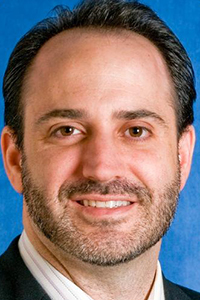Evidence Links Abnormally Formed Proteins With Schizophrenia Pathology in Some Patients
Evidence Links Abnormally Formed Proteins With Schizophrenia Pathology in Some Patients

Abnormally formed proteins may be involved in the pathology that causes schizophrenia in a subset of patients, new research suggests.
A team led by 2013 and 2010 BBRF Young Investigator Frederick Nucifora, Ph.D., D.O., M.H.S., of Johns Hopkins University School of Medicine, and including seven other BBRF grantees, published their findings in the American Journal of Psychiatry.
The team analyzed postmortem brain tissue from 42 schizophrenia patients, donated by brain banks at three different institutions. They compared these with postmortem brain samples (from the same collections) of 41 people who had not been diagnosed with schizophrenia. Having samples from different collections enabled the team to test and retest their results for consistency.
The researchers looked at two areas of the brain thought to be perturbed in schizophrenia: the prefrontal cortex and the superior temporal gyrus, a region involved in auditory processing and language comprehension. Within those regions, the team scrutinized proteins, dividing them into two groups, those that dissolve in water (“soluble”) and those that do not (“insoluble”). After they are manufactured by cells, proteins normally fold in a way that makes them soluble. Misfolded proteins, which are often insoluble, don’t function properly, or at all, and can cause a variety of pathologies.
Dr. Nucifora and his team, thinking about how clumps of insoluble, misfolded proteins are seen in the brains of Alzheimer’s patients and in other illnesses, wanted to see if they could find evidence of similar pathology in schizophrenia. Unable to access key brain areas in living patients, it was therefore necessary to look at postmortem brains.
The results of this research were striking. Twenty of the 42 schizophrenia brains that were analyzed contained significantly more insoluble proteins compared with the other 22 schizophrenia brains and the 41 control brains. The researchers then used a method called mass spectrometry to learn more about the proteins in the insoluble portion. In the brains with more insoluble proteins, they found unique and, also, abnormal proteins in greater abundance.
Further analysis indicated that many of these abnormal proteins were components in pathways involved in the development of the nervous system. Specifically, they were involved in generating the connections neurons use to communicate with one another; the process by which new neurons are generated (neurogenesis); and the process by which neurons recognize the axons of other neurons.
The main finding of abnormal proteins and the processes they affect are consistent with theories of schizophrenia that trace its origins to the brain’s development, and to problems that emerge in neural communication.
The fact that the abnormal proteins were present in only half of the brain samples from schizophrenia patients suggests that the observed protein abnormalities are likely to be found only in a subset of schizophrenia patients, the team said. This work thus provides evidence that subtypes of the illness exist, which has implications for diagnosis and treatment development.
More research is under way to link insoluble proteins with disease causation, specific clinical symptoms of schizophrenia, and to discover if similar irregularities are present in other psychiatric illnesses.
The team also included: first author Leslie Nucifora, Ph.D., a 2017 BBRF Young Investigator; Akira Sawa, M.D., Ph.D., a BBRF Scientific Council member and 2011 Distinguished Investigator and 2004 and 2002 Young Investigator; Carol Tamminga, M.D., also a Scientific Council member, a 2011 Lieber Prizewinner and 2010 and 1988 Distinguished Investigator; Christopher Ross, M.D., Ph.D., a 2004 and 1995 BBRF Distinguished Investigator and 1990 Young Investigator; Robert Sweet, M.D., a 2017 BBRF Distinguished Investigator; Russell Margolis, M.D., 2007 BBRF Distinguished Investigator, 2003 and 1999 Independent Investigator, and 1994 Young Investigator; and Matthew MacDonald, Ph.D., a 2014 BBRF Young Investigator.



